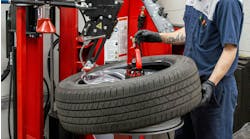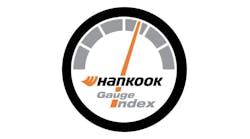Retail sellout trends returned to positive territory in September, as our dealer contacts report retail sales growth of 1% during the month. After the slight decline to just below flat in August, the return to growth is a good indicator. It’s a marked improvement from seven straight months of negative results earlier in the year, and a notable gain from the mid-single digit declines we had seen in the spring and early summer. And while it’s less pronounced than the 3.5% gain in July, it still represents an improvement.
Regionally, the biggest gains were seen in the Northeast and Southeast, with sellout trends up 3.8% and 3.4% respectively. The Southwest was the lone region to report negative sellout — with dealers down 2.3% year-over-year.
We see September’s positive momentum as confirmation of green shoots appearing in the replacement tire market and we continue to see trends incrementally stronger than earlier in the year. While dealers didn’t see a clear catalyst for the September strength, we believe the consumer deferment cycle is pushing more consumers to pursue needed auto repairs. Costs also are preventing consumers from replacing their current vehicle.
Given these trends, as well as the positive momentum seen in September, we would not be surprised to see sellout levels remain on the positive side moving forward. Easier comparables will help, and the turn of weather seasons has the potential to help, too.
A factor in miles driven boost
Another positive sign is the continuing improvement in miles driven. September marked the seventh consecutive month of gains. We have to go back to the period of September 2021 to March 2022 to see such a stretch. Our miles driven momentum index registered a 2.1% gain in September, up from year-over-year gains of 1.4% in August and 2.9% in July. As a whole, the index for the third quarter grew 2.1% year-over year.
We believe shifting trends in workforce dynamics are a contributing factor to the recent strength in miles driven. More companies are gradually bringing employees back into the office. While remote and hybrid work is undoubtedly a trend following the COVID-19 pandemic, we see companies implementing hybrid approaches to reduce remote work. Even Zoom is now requiring employees who reside near an office to work onsite for a portion of the week. We see this as a broadening trend with employees spending more time commuting, which positively impacts vehicle miles driven — and ultimately boosts tire replacement, retail sellout and the overall automotive aftermarket as we close 2023 and look into 2024.
As for tire inventory, we continue to see the industry in a bit of a holding pattern. Dealers appear comfortable with current inventory levels based on an expectation that wholesale prices could decline in the coming months. Based upon this, we believe wholesale tire sales could be sluggish in the months ahead, while favorable signs continue to appear on the retail side of the equation.
Demand edges upward
Commentary from tire dealers suggests consumer demand for passenger and light truck replacement tires was stronger than a year ago. Twenty-eight percent of our contacts saw positive demand trends in September, up from the 11% of dealers who reported positive demand in August.
And while sellout comparables are expected to be easier as we move into fall and winter, September 2022 was by no means an easy comparable. This year, it seems the positive demand was driven by consumers seeking less expensive tire options. Several tire dealers indicated lower-priced options were in demand and gaining share in the mindset of consumers as compared to higher-tier brands with more expensive pricepoints. We believe the gains in demand will continue, and if winter 2023 simply cooperates, we may see further acceleration in consumer tire replacement.
In September, dealers report tier-two tire brands were far and away the most in demand. We’ve seen in recent months that consumers trading down has been a prevalent theme echoed by operators in the replacement tire space, and September’s tier result confirms this view. Contacts told us that the price of low-cost imports continues to fall, while premium tire prices have remained relatively sticky. And in September we saw tier-one brands fall to the bottom of our rankings, after grabbing the top spot with the highest demand a month ago.
Given our current inflationary environment, it seems rational that consumers are trading down to tier-one and tier-two brands. We still believe that long term, consumers will opt for tier-two products to strike a balance between cost and performance.





